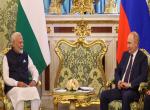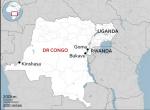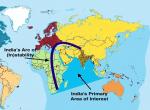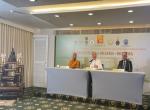Introduction
The 24th ASEAN Summit was held for the first time in Naypyitaw, the capital of Myanmar. At the commencement of the summit on May 10, there were serious concerns raised by Vietnam on the recent drilling of an oil rig at the disputed Paracel Islands. ASEAN as a group deals primarily with political and economic issues. Despite the terms of reference, Vietnam brought out the issue and China responded by stating that it would be resolved bilaterally. The Vietnamese Prime Minister has stated that this affected Vietnamese sovereignty as the drilling was taking place 120 nautical miles from the Vietnamese coast which as per the Law of Seas forms a part of the Exclusive Economic Zone of their country. The US State Department as per the Bangkok Post has called Beijing’s move to introduce an oil rig in the Paracel Islands as provocative. Further on 06 May, Philippines arrested 11 fishermen and seized a boat for poaching more than 500 endangered sea turtles at the disputed Half Moon South China Sea shoal. The Chinese call the shoal as Banuye Reef and claim it to be a part of the Nansha Islands. China has called for the release of the fishermen, but Philippines is currently proceeding legally with the case.
Analysis
Paracel Islands were occupied by Chinese from the erstwhile South Vietnamese in 1974. Ever since, China has been gradually spreading its influence over other islands in the South China Sea. It has built a small garrison town Sansha in the Woody Island of the Paracel Group. Sansha has an airport and a runway of 2700 metres which enable Chinese Air Force to operate in the area.
The China National Offshore Oil Company’s decision to move oil rig HD-981 was a pre meditated move which has hurt Vietnam and other claimants of islands in the South China Sea. The oil rig was escorted by about 80 ships of Peoples Liberation Army Navy (PLAN) as also the Chinese Coast Guard and moved into its current location on 02 May 2014. The rig is going to remain in location for three months and drilling operations would continue during this period. The commencement of drilling was formally opposed by the Vietnamese Deputy Prime Minister and Foreign Minister Pham Binh Minh who telephoned China’s State Councillor Yang Jiechi indicating violation of the Law of Seas. China listened to the Minister but continued the drilling process. Vietnam sent 35 ships out of which 29 were armed. On 04 May, Chinese ships rammed two Vietnamese Sea Guard vessels injuring seven Vietnamese. Chinese ships with air support were also used to intimidate six more Vietnamese ships. Further, water cannons were also used to threaten the Vietnamese. As of now not a single round has been fired.
The standoff has led to wide spread demonstrations in Vietnamese urban areas. There have been reports of Taiwanese factories being attacked who the Vietnamese are mistaking for Chinese. The situation remains tense and there is a need to sit at the negotiating table and resolve issues peacefully.
The moot point is why did China despatch rig HD-981 to the Paracel islands? The rig has been positioned immediately after the visit of US President Obama to Japan, South Korea, Philippines and Malaysia. The Chinese military posturing with their Navy and Air Force is possibly to test the US response to such an eventuality. Chinese feel that the US is currently tied down with Iran, Syria, Nigeria and Ukraine. They neither have their forces nor the inclination to get involved in issues pertaining to the South China Sea. Possibly Vietnam too would be seeking military partnerships to strategically balance China’s posturing.
Way Ahead
Despite assurances given by the US President, events of the last two weeks have clarified that the US would like the issue to be resolved diplomatically. There is no strong statement from the US State Department apart from maintaining that it is a provocation. Vietnam has responded with military precision by positioning 35 ships to counter 80 ships of the Chinese backed by Air Force. There is a need for negotiations to resolve the issue bilaterally. Vietnam is also considering legal options, which may not be undertaken. The Philippines issue of the Chinese fishermen too needs to be diplomatically resolved. Manila has also complained to China regarding construction on the Johnson Reef. The Chinese have stated that Johnson Reef belongs to them and they would continue with the construction. The Philippines have already submitted their case to UN tribunal for hearing their case on the South China Sea. In January 2014, the entire case was submitted with 40 maps and nearly 4000 pages of evidence. The case is not likely to be heard before 2015.
All these cases reflect Chinese hegemony in dealing with the situation and there is a need to strategically balance China. While the US is beset with numerous problems currently, it would be pertinent for Japan, Vietnam and India to strengthen their strategic partnership and respond to Chinese posturing. The start point would be to have joint naval exercises between these countries. These exercises should commence in non disputed territory and gradually move on to the South China Sea and East China Sea. This would create strategic problems for the Chinese resulting in discussions based on mutually accepted logic. China respects strength and needs to be tackled with ingenuity. Once the three strategic partners get their act together, China would have to play its cards cautiously and the US would also be a facilitator for these actions.
Conclusion
China is the dominant power in Asia. To balance this power, there is a need for intense strategic partnership between India, Vietnam and Japan. Strategy is a game played in the minds of strategic thinkers and practitioners. With strong leadership in these countries, intense strategic partnerships would become a reality. India’s own maritime interests in the South China Sea would be greatly affected if China does not adhere to UN Convention on Law of Sea. International community through its joint and combined efforts needs to impress upon China to follow the path of peaceful development rather than adopt muscular methods to assert its territorial claims.
(The author was India’s Defence Attache to Vietnam)
Published Date: 27th May 2014, Image source: http://static.tuoitre.vn










Post new comment